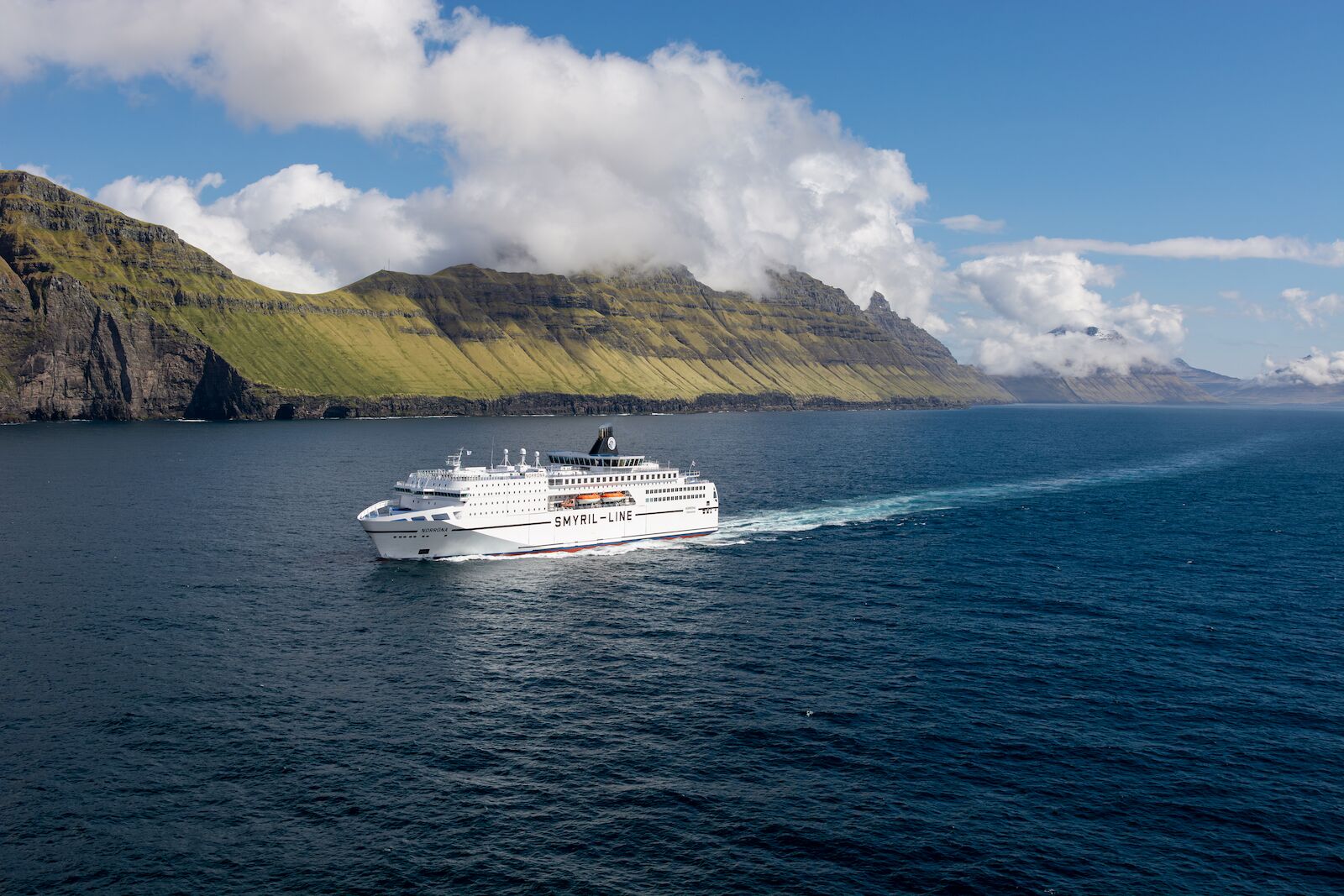While the most common way to get to Iceland from anywhere in the world is to fly, you can also make your trip a little more unusual and memorable by going there by sea. There is a regularly scheduled ferry operated by Smyril Line that sails between Denmark and Iceland every week between mid-March and late November, so you can visit the most remote northern corner of Europe by taking an epic mini cruise across the North Atlantic. The best part is: You get to stop in the Faroe Islands on your way.


This Ferry Trip to Iceland Is Like a Mini Cruise in the North Atlantic
- What is the route of the ferry to Iceland?
- When does the ferry to Iceland operate?
- How long does the Smyril Line ferry from Denmark to Iceland take?
- What is the ferry to Iceland like?
- What is the price of taking the ferry to Iceland?
- Can I stop over in the Faroe Islands on my way to Iceland by ferry?
- Does the ferry crossing from Denmark to Iceland get very choppy?
What is the route of the ferry to Iceland?
The MS Norröna, the Smyril Line ferry that travels between Denmark and Iceland (via the Faroe Islands) departs from the port of Hirtshals, Denmark. It stops in the port of Tórshavn in the Faroe Islands on its way to and from the port of Seyðisfjørður, Iceland.
A ferry trip to Iceland is not meant for those who want a quick and easy journey, especially if you’re not traveling with a vehicle. Hirtshals is located in the very north of Denmark, 300 miles away from the capital city of Copenhagen, and Seyðisfjørður is located in the east of Iceland, 400 miles from the capital city of Reykjavík, so you’ll need to plan transportation options to and from the ports carefully before you get on board. Note that it’s common for passengers with cars to offer rides to foot passengers upon arrival in Iceland, but look into other options (like a long-distance bus with Straeto) because you’re not guaranteed that a charitable soul will take pity on you.
When does the ferry to Iceland operate?
The MS Norröna sails once per week from Denmark to Iceland (via the Faroe Islands) and back, but only between mid-March and late November.
The ferry operates between Denmark and the Faroe Islands throughout the year, however, with two dearptures weekly in the summer.
A detailed schedule of the MS Norröna is available on Smyril Line’s website, so you can plan your trip to the minute.
How long does the Smyril Line ferry from Denmark to Iceland take?

Photo: Smyril Line
The ship departs from Denmark on Saturday afternoons and arrives in Iceland on Tuesday mornings, making for less than three days at sea.
What is the ferry to Iceland like?
Able to accommodate 1,482 passengers in 318 cabins, the MS Norröna is very much like a mini cruise ship. There are multiple food and drinks venues on board, including a buffet and a gourmet restaurant, a fitness center, a sauna, a pool, and a duty-free shop.
There is a variety of cabins on offer, from minimalist six-person couchettes fitted with berths which can be booked individually, to four-person cabins, two-person cabins, single cabins, cabins with double beds, and lavish suites. While passengers who book a berth in a couchette only have access to shared bathroom facilities, those with cabins and suites all have their own private bathroom, as well as a closet, a desk, and a TV.
What is the price of taking the ferry to Iceland?
Sailing on board the MS Norröna from Denmark to Iceland can be very affordable, starting at $133 per person for a simple berth in a couchette. Prices vary according to the season and to demand, so the best way to score a good deal is to book early. Bookings are open for the entire year.
Oddfríð Petersen, Sales and Marketing Manager at Smyril Line, gave us the lowdown on the cheapest prices for passengers with a vehicle who want to stay in a cabin. “For a one-way ticket including one passenger, a standard vehicle, and an inside cabin, our low season prices start from €311 [$339]. During the high season, particularly in the summer months, the price for the same trip typically begins at around €388 [$423]. However, you might get lucky to get a good offer on certain departures.”
Note that, unlike on cruises, meals are not included, and purchasing food on board the ferry can be pricey. You can bring your own provisions, however they are unlikely to last for the three-day sailing and there are no fridges, microwaves, kettles, etc. for you to use. A better way to save money is to book your meals in advance upon purchasing your ticket.
Can I stop over in the Faroe Islands on my way to Iceland by ferry?
The ferry stops for a few hours in Tórshavn in the Faroe Islands on the way from Denmark to Iceland and on the way back from Iceland to Denmark. If you want to stay longer than a few hours in the Faroe Islands, there are stop-over options during which you can stay from three days to one week in the Faroe Islands before resuming your journey toward Iceland or Denmark.
Does the ferry crossing from Denmark to Iceland get very choppy?
While there is no way to say what crossings will be like during the operational season, it’s best to take seasickness pills with you (or any other form of seasickness treatment that works for you.) The waters of the North Atlantic can get very rough at times and those with motion sickness are likely to struggle. That said, don’t be too worried, Oddfríð Petersen, Sales and Marketing Manager at Smyril Line told us that “some trips can be rough, but most of the time, you cannot even feel you are sailing.”